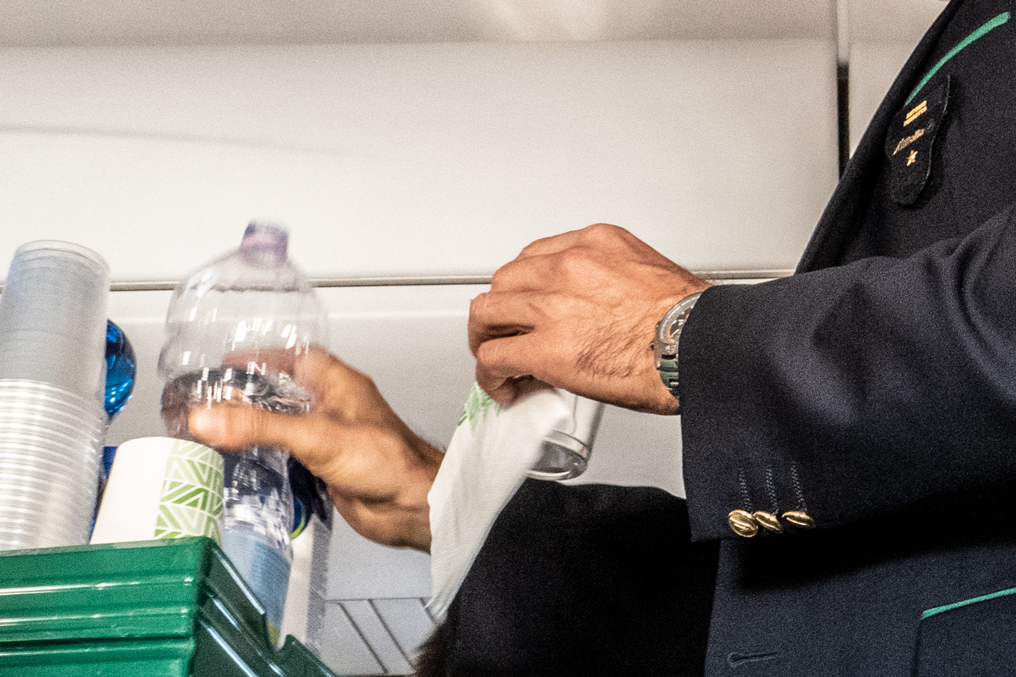
Hands of a Steward
Shooting up and close in confined space. A skill every street-photographer should hone.
This photograph, Hands of a Steward, strips air travel of its grand narratives—no sweeping cabin views, no glamour of jet engines—reducing it instead to the essential human act of service. The subject is cropped tightly, showing only the steward’s forearms and hands as they prepare to serve water. The details tell the story: the gold buttons on the navy blazer, the insignia on the chest, the precise, slightly formal watch peeking from under the cuff.
Composition
The frame works in the language of precision. By excluding the steward’s face and body, the photograph directs our full attention to the hands in motion. The vertical alignment of the plastic cups and the bottle leads the viewer’s eye upward, while the diagonal forearm and paper napkin introduce a dynamic counterbalance. The tight crop eliminates all unnecessary context, giving the image an almost documentary intimacy.
Exposure and Light
The exposure is well controlled. The white highlights of the cups and napkin are bright but not clipped, while the deep blues of the blazer retain detail in the stitching and fabric texture. The ambient cabin light—typically harsh and mixed in colour temperature—has been handled well, with no obvious colour cast distorting skin tones or whites. The specular highlights on the bottle add dimensionality, separating it from the background.
Focus and Detail
Depth of field is shallow enough to keep the emphasis on the steward’s hands, but broad enough to render all relevant elements—cups, bottle, napkin—sharp. The high shutter speed freezes the moment, catching the slight bend of the plastic bottle and the wrinkle of the napkin mid-grasp. These micro-details lend the image a tactile quality, making the viewer almost feel the textures.
Narrative Strength
There is an unspoken dignity in the act depicted. Air travel is often romanticised or, conversely, reduced to inconvenience. This image lands in neither camp. Instead, it isolates the understated precision of a cabin crew member’s work—an unglamorous yet essential gesture of care for passengers. The anonymity of the steward universalises the moment, making it a stand-in for every unseen hand that maintains the rhythm of service in the air.
In Hands of a Steward, photography serves as both documentation and distillation: a single act, framed and lit with care, becomes a quiet emblem of professionalism. The absence of the person’s face is not a loss—it is the point. The photograph is about the role, the gesture, and the craft of service itself.




